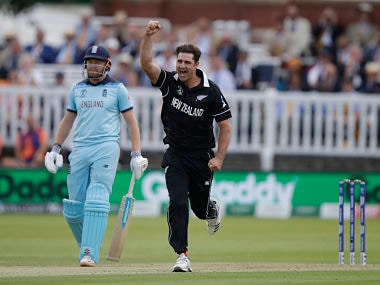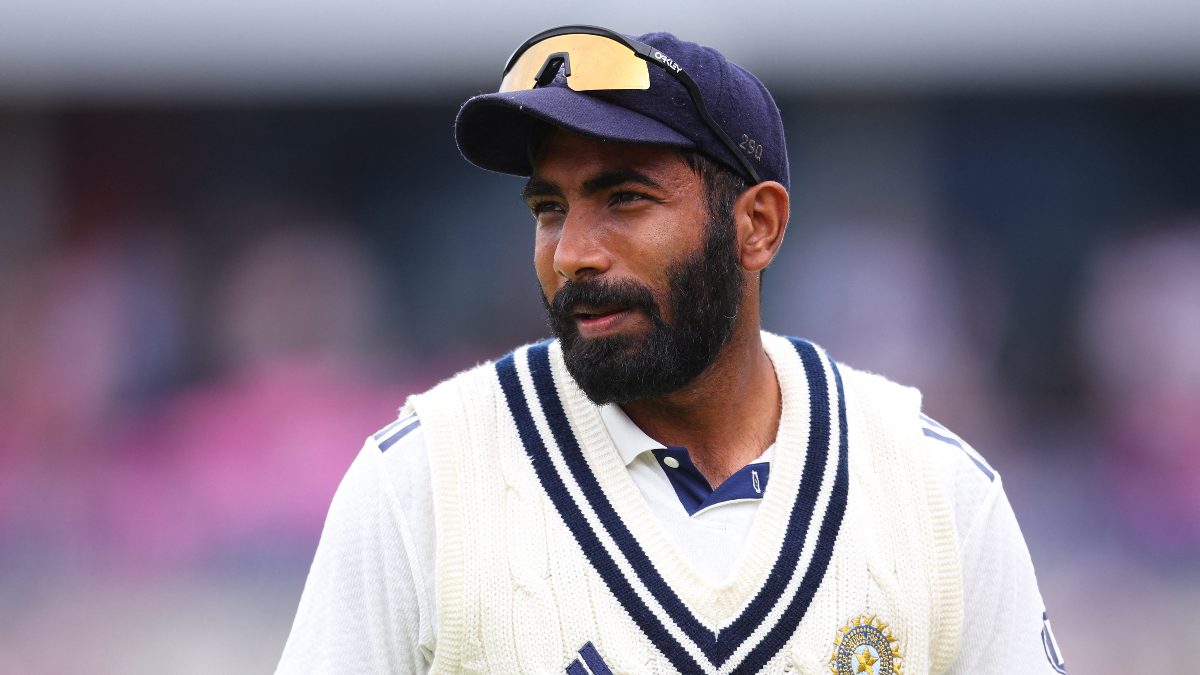It all began with England and Australia going nostalgic and designing their World Cup jerseys similar to their clothing in the 1992 World Cup. Pakistan took it to the next level by syncing their results in the league stage to that from the 1992 World Cup. Faf du Plessis did a Martin Crowe 1992 encore in the tournament opener by unleashing Imran Tahir at the famed England opening duo. Meanwhile, ICC played it’s part with a dubious tie-breaker rule in the gripping finals between England and New Zealand at Lord’s, reminiscent of the 1999 World Cup semi-finals between Australia and South Africa. [caption id=“attachment_7008981” align=“alignleft” width=“380”]  New Zealand’s Colin de Grandhomme celebrates after taking a wicket in the final against England. AP[/caption] The 10-team tournament threw up several trends straight from the 90s cricketing journals to make for some exciting on-field action. The return of finger spin The obsession with wrist spin in One Day Internationals perhaps stemmed from T20s where the batsmen had to take risks against leg-spinners, often recognised as wayward, yet wicket-taking bowlers. With ODIs quickly turning into extension of T20s, wicket-taking in the middle overs became a primary requirement and wrist spin seeped into the game like never before. However, with pitches evening out the chasm between bat and ball at this World Cup, the trend took a sharp detour in the middle of the tournament. Teams and coaches, flanked by analysts and video aids, started recognising this shift and made immediate amendments to their plans. Australia were perhaps the first to make a bold move when they replaced Adam Zampa with Nathan Lyon. While the leg-spinner picked up five wickets in four matches, Lyon picked up just three in as many matches. The difference was in the economy rates – a healthy 5.32 to a questionable 7.15. Lyon gave Australia more control in the middle overs and allowed the seamers to attack from the other end. India followed suit by benching Kuldeep Yadav for Ravindra Jadeja in the last league match and persisted with the all-rounder for the semi-finals, a move that earned several positive feedback after Jadeja’s stellar show at Manchester. New Zealand resisted the temptation to play Ish Sodhi over Mitchell Santner several times on those used pitches and Santner time and again stepped up to show that the decision was justified. The good old middle overs The result of T20 batting seeping into cricket was that people yearned, or were forced into believing that they yearn, for excitement in every over. This, of course, had a major hurdle in ODIs where the middle overs phase often let the game drift and take its own course. The result of this was two five-over blocks of Powerplays, which went from bowling powerplay in 2007 to batting Powerplay in 2012, which could be used at the discretion of the batting (2011)/bowling(2007) sides. In the 2015 World Cup, this was cut down to one Powerplay. For the 2019 World Cup, we had an entire Powerplay block from 11-40 overs where teams were only allowed four fielders outside the circle. These rules were all fashioned to make this phase, supposedly snooze fests, more colourful. But the 2019 World Cup threw up some of the most exciting middle over phases in ODIs. From batsmen scoring at six runs per over to bowlers grabbing big wickets, the middle overs, arguably, made way for the most alluring phase in the World Cup. In Pakistan’s loss to India at Manchester, there was one phase in the middle overs in Pakistan’s innings – overs 10 to 25 r – when they scored 88 runs in 15 overs for the loss of just one wicket. They went on to lose four more wickets by the 40th over. Some of the best matches in this World Cup – South Africa vs New Zealand, India vs Afghanistan, Sri Lanka vs England, Australia vs England, India vs New Zealand and the World Cup final – had incredible moments in these middle overs. Old ball bowling During the Australia vs England league match, the hosts had a saviour in Ben Stokes, who absorbed the pressure of wickets from the other end to grit it out against some top class bowling from Lyon, Marcus Stoinis and Pat Cummins in the middle overs. But Aaron Finch chose Mitchell Starc to bowl the 37th over and the strike bowler picked up the wicket of Stokes and gave away just five runs in two overs. Starc, like a few others, made it a habit of picking up big wickets in the middle overs with the old ball. A lot of 90s ODI cricket featured spinners holding one end up with seamers coming back after their initial spells to jolt the middle order. In the World Cup finals, Liam Plunkett used a slew of cross seam deliveries in a sensational middle-over spell that tilted the balance of the game in England’s way. Plunkett’s four-over burst accounted for Kane Williamson and Henry Nicholls and he conceded just seven runs. Plunkett, Starc and Lockie Ferguson picked up more than 10 wickets in the middle overs in this World Cup. Dibbly-dobbly Colin de Grandhomme, in the second innings of the World Cup final, put on an exhibition of dibbly dobbly bowling, another feature of the 90s to restrict England. His 10-over spell had two maidens, leaked just 25 runs and accounted for the big wicket of Joe Root. It was the second-most economical spell in a 50-over World Cup final. Incidentally, the most economical spell belongs to Derek Pringle, an Englishman who had fine-tuned his bowling to become one among the many dibbly dobblers in those years of ODIs. It was only fitting that de Grandhomme played for a country that produced some exceptional medium pacers in the 90s – the likes of Gavin Larsen, Chris Harris, Rod Latham and Willie Watson, collectively referred to as dibbly-dobbly-wibbly-wobbly by a commentator in the 90s. Angelo Mathews, Vijay Shankar and Soumya Sarkar also made impact performances with the ball in their own innocuous fashion. The pitches and the contests Despite outcries over the weather in the early half of the tournament, the World Cup produced some exceptional pitches culminating in one of the best surfaces on which an ODI was played – the final at Lord’s where 241 was scored by either team in 50 overs. That totals moved down from the high 300s to the mid-200s and it made way for some incredible contests between bat and ball. The ODIs post the 2015 World Cup were quickly turning into a boundary-hitting contest between two sides but this World Cup was not all about batting. There was a level playing field where bowlers were as much integral to the game as the batsmen. Only two scores in excess of 250 were chased down – Bangladesh against West Indies (322) and India against Sri Lanka (265) – by teams and with pitches slowing down in the second half, the challenges were in plenty for teams. They had to restrict the team batting first to chaseable totals before surviving the pitch and old ball bowling to chase the runs down. This made for some exciting matches where totals hovered around the mid-200 range. *** The purported lack of competition was one reason why the World Cup was cut down to size – from 14 in 2015 to 10 in 2019. While it might seem like the decision made for some excitable contests, much of it came in the second half after the pitches slowed down. In the initial half of the tournament, there were quite a few forgettable, one-sided matches between the top tier teams. If not for an unexpected win by Sri Lanka over England, the World Cup would have seen some drab league matches with no context towards the end. Afghanistan may not have won a single match but by running India and Pakistan close, they showed that Associates in the World Cup could only have made this spectacle even more spectacular. The non-involvement of Associate nations meant that we would never have been able to witness a major upset in this World Cup – a massive element from the 90s with Kenya in 1996 and Bangladesh in 1999 pulling off major upsets. This change, if made for the next tournament, could well be the icing for a well-balanced World Cup.
The ICC Cricket World Cup 2019 in United Kingdom threw up several trends straight from the 90s cricketing journals to make for some exciting on-field action.
Advertisement
End of Article


)

)
)
)
)
)
)
)
)



